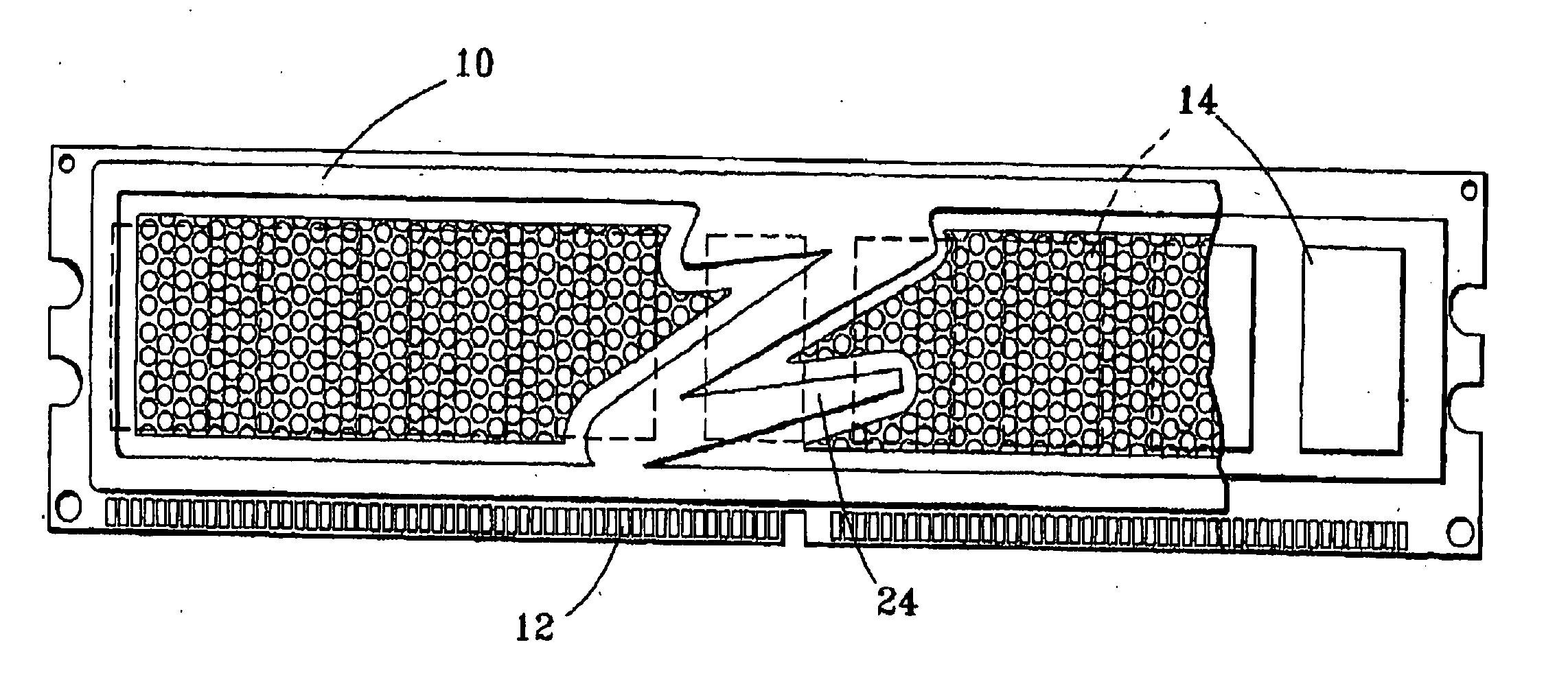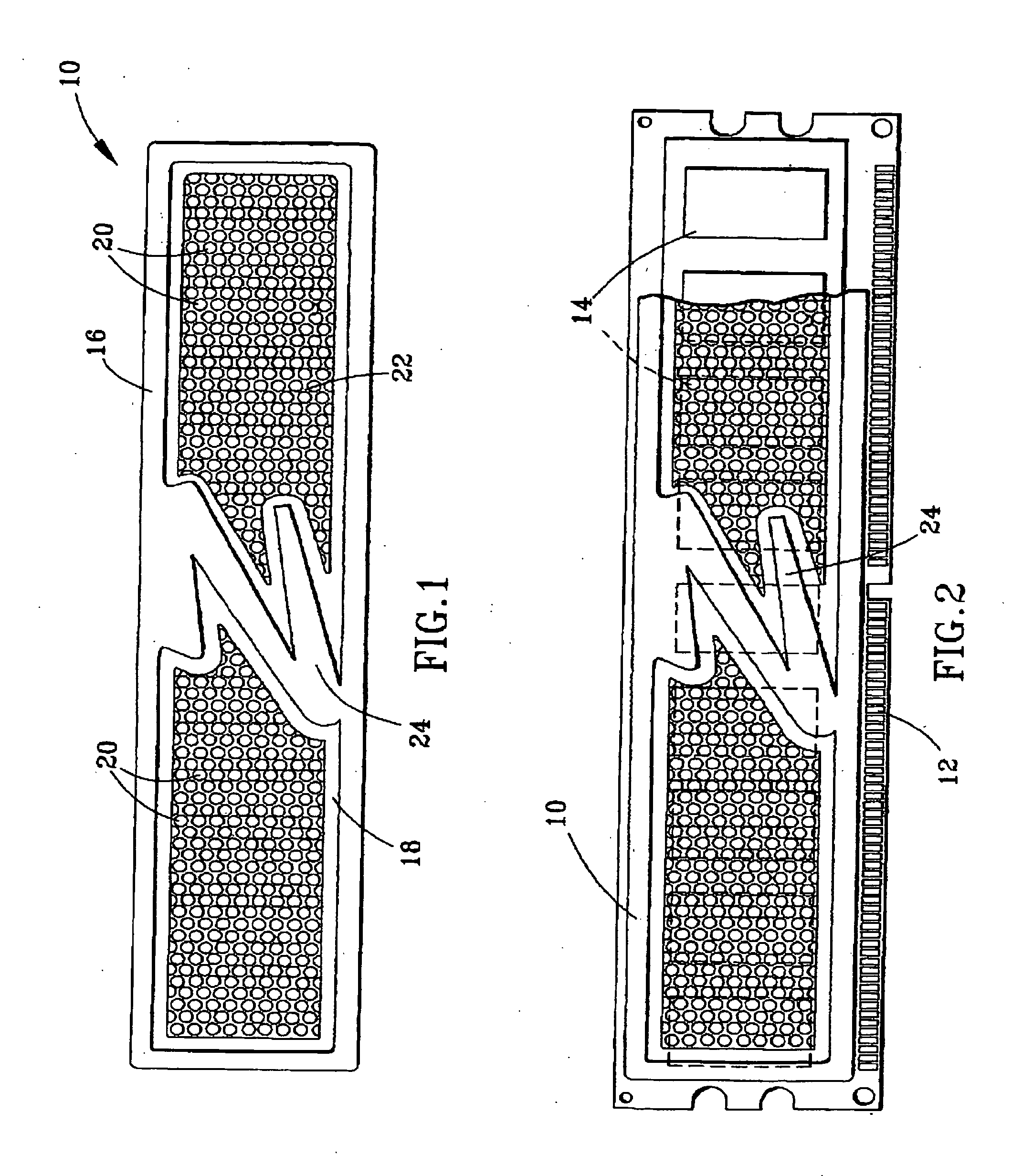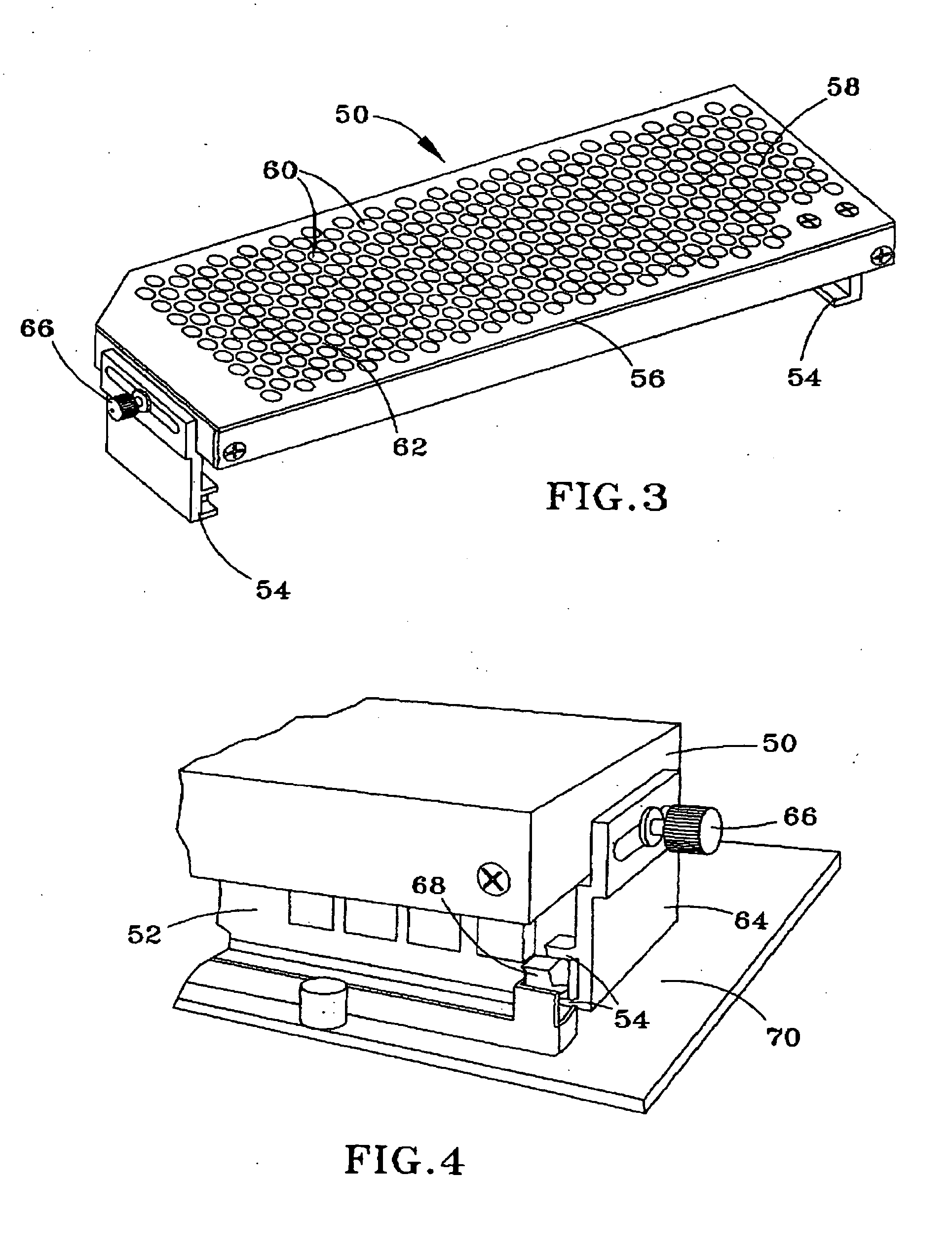Method and apparatus for thermal management of computer memory modules
- Summary
- Abstract
- Description
- Claims
- Application Information
AI Technical Summary
Benefits of technology
Problems solved by technology
Method used
Image
Examples
Embodiment Construction
[0017]FIGS. 1 through 4 represent perforated heat spreaders 10 and 50 for use with computer memory modules, such as the memory module 12 represented in FIG. 2 as comprising a number of memory chips 14. As represented in FIGS. 1 through 4, the heat spreaders 10 and 50 have generally rectangular shapes, which as evident from FIG. 2 approximately coincides with the peripheral shape of the memory module 12 with which the heat spreader 10 is used. Preferred materials for the heat spreaders 10 and 50 include aluminum, copper, and other metal and metal alloy materials commonly used as heat sinks and conductors for thermal management applications, though it is foreseeable that other materials with reasonably good thermal conduction could also be used.
[0018] The outline of the heat spreader 10 of FIGS. 1 and 2 is defined by a frame 16 that surrounds an interior region 18 of the heat spreader 10, in which a number of perforations 20 are formed (e.g., by stamping, molding, etc.) to extend thr...
PUM
 Login to View More
Login to View More Abstract
Description
Claims
Application Information
 Login to View More
Login to View More - R&D
- Intellectual Property
- Life Sciences
- Materials
- Tech Scout
- Unparalleled Data Quality
- Higher Quality Content
- 60% Fewer Hallucinations
Browse by: Latest US Patents, China's latest patents, Technical Efficacy Thesaurus, Application Domain, Technology Topic, Popular Technical Reports.
© 2025 PatSnap. All rights reserved.Legal|Privacy policy|Modern Slavery Act Transparency Statement|Sitemap|About US| Contact US: help@patsnap.com



